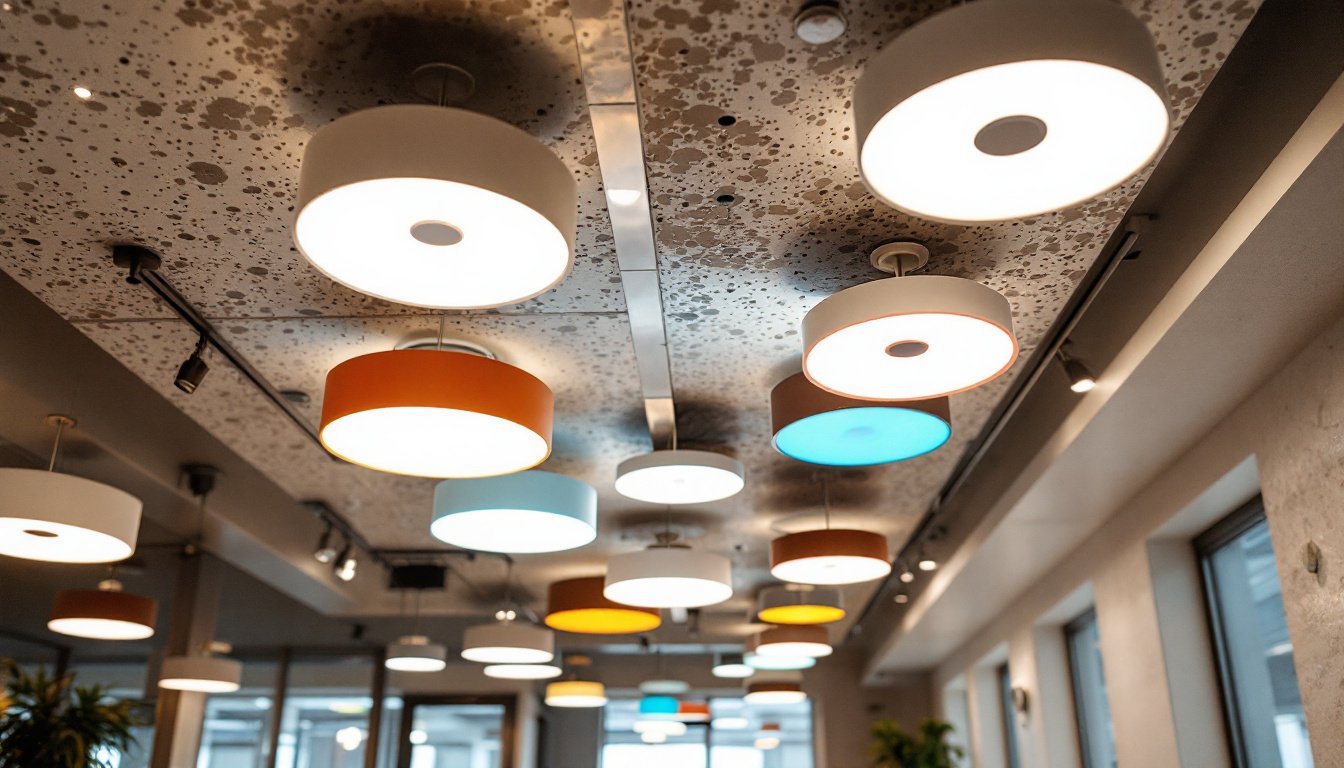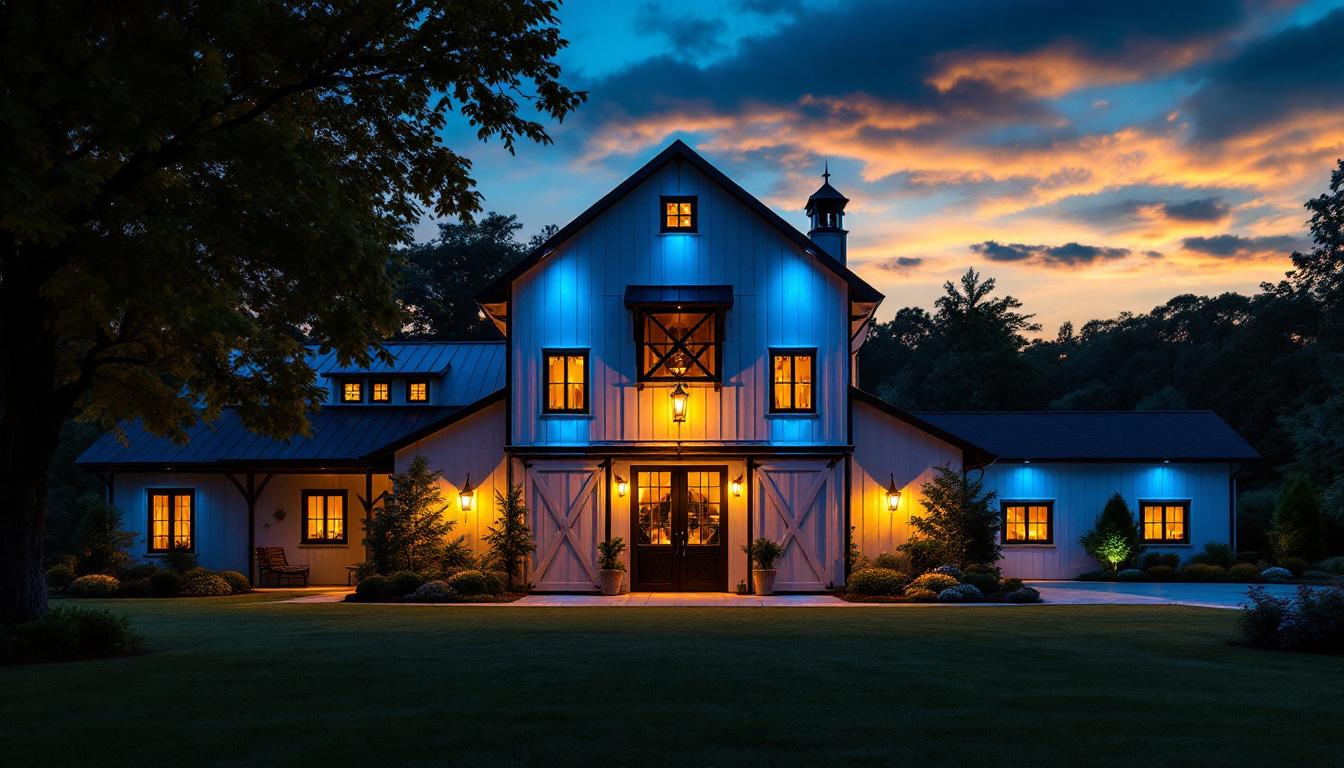
In the evolving world of lighting technology, ballast compatible LED tubes have emerged as a practical solution for many lighting contractors. These tubes are designed to work with existing fluorescent ballasts, allowing for a seamless transition from traditional lighting systems to energy-efficient LED solutions. This not only reduces energy consumption but also minimizes installation costs and downtime for clients. As businesses and facilities strive to meet sustainability goals, the adoption of these LED tubes becomes increasingly appealing, contributing to a greener environment while also enhancing the quality of light in various settings.
Ballast compatible LED tubes come in various configurations, including Type A, Type B, and Type C, each offering unique benefits and installation methods. Understanding these types is crucial for contractors looking to provide the best solutions for their clients while ensuring compliance with local regulations and standards. Moreover, the ability to choose the right type can significantly impact the overall performance and longevity of the lighting system, making it essential for contractors to stay informed about the latest advancements in LED technology.
When discussing ballast compatible LED tubes, it’s essential to recognize the different types available and their respective advantages. Type A tubes, for instance, operate directly with existing ballasts, making them a straightforward replacement option. This ease of installation means that contractors can quickly upgrade lighting systems without extensive rewiring, which is particularly beneficial in commercial settings where minimizing downtime is critical. Type B tubes, on the other hand, bypass the ballast entirely, requiring direct wiring to the electrical supply. This method can lead to enhanced energy efficiency and reduced maintenance costs over time, as the absence of a ballast eliminates a potential point of failure. Lastly, Type C tubes utilize a separate driver, allowing for more flexibility in installation and performance, which can be especially advantageous in complex lighting designs or where dimming capabilities are desired.
Each type has its own set of advantages, and understanding these can help contractors make informed decisions based on the specific needs of a project. For example, while Type A tubes are easy to install, Type B tubes can offer better energy savings in the long run, despite requiring more initial work during installation. Additionally, Type C tubes often provide superior light quality and control options, making them suitable for applications where precise lighting is essential, such as in art galleries or retail spaces. As the market continues to evolve, the emergence of smart LED technology further enhances the capabilities of these tubes, allowing for integration with building management systems and offering features like remote control and scheduling. This not only improves energy efficiency but also adds a layer of convenience for users, making ballast compatible LED tubes a versatile choice for modern lighting solutions.
Training is a vital component in ensuring that your team is well-equipped to handle the transition to ballast compatible LED tubes. A knowledgeable team can provide better service to clients, ensuring that installations are performed correctly and efficiently. Moreover, ongoing education helps contractors stay updated on the latest technologies and industry standards.
Investing in training not only enhances the skills of your team but also boosts their confidence in handling various lighting projects. This confidence translates into improved customer satisfaction and potentially more referrals and repeat business.
Developing a comprehensive training program is essential for equipping your team with the knowledge they need. Start by outlining the key topics that should be covered, such as the different types of ballast compatible LED tubes, installation techniques, and troubleshooting common issues. Incorporating hands-on training sessions can also be beneficial, allowing team members to practice their skills in a controlled environment.
Additionally, consider using a mix of training methods, including workshops, online courses, and on-the-job training. This variety can cater to different learning styles and ensure that all team members can absorb the information effectively.
There are numerous resources available for contractors looking to train their teams on ballast compatible LED tubes. Manufacturers often provide training materials, including installation guides, videos, and webinars. Additionally, industry associations may offer workshops and certification programs that can enhance your team’s expertise.
Leveraging these resources can save time and ensure that your training program is comprehensive and up-to-date. Furthermore, encouraging team members to pursue additional certifications can help them stay competitive in the ever-evolving lighting industry.
Once your team is trained, it’s crucial to implement best practices during the installation of ballast compatible LED tubes. Following these practices not only ensures safety but also maximizes the performance and longevity of the lighting system.
Safety should always be the top priority during any installation project. Ensure that your team is familiar with proper safety protocols, including wearing personal protective equipment (PPE) and adhering to electrical safety standards. Conducting a safety briefing before starting any project can help reinforce the importance of these practices.
Additionally, ensure that your team is aware of the specific requirements for working with electrical systems. This includes understanding how to safely handle and dispose of old fluorescent tubes, as they may contain hazardous materials.
Proper installation techniques are crucial for ensuring the optimal performance of ballast compatible LED tubes. For Type A tubes, it’s essential to verify that the existing ballast is functioning correctly before installation. If the ballast is faulty, it may lead to flickering lights or premature failure of the LED tubes.
For Type B installations, the team must ensure that the wiring is correctly configured to bypass the ballast. This requires a thorough understanding of the electrical system and adherence to local codes and regulations. Type C installations should be approached with care, ensuring that the driver is compatible with the LED tubes being used.
Even with proper installation, maintenance and troubleshooting are essential aspects of managing ballast compatible LED tubes. A proactive approach to maintenance can extend the life of the lighting system and enhance overall performance.
Establishing a routine maintenance schedule can help identify potential issues before they become significant problems. Regular checks should include inspecting the tubes for any signs of damage, ensuring that all connections are secure, and testing the lighting performance.
Encouraging clients to report any flickering or dimming lights can also help in addressing issues early. Providing clients with a simple checklist for maintaining their lighting systems can enhance their satisfaction and reduce the likelihood of service calls.
Training your team to troubleshoot common issues with ballast compatible LED tubes is crucial. Common problems may include flickering lights, inconsistent brightness, or complete failure of the tubes. Understanding the potential causes of these issues can help your team quickly diagnose and resolve problems.
For instance, flickering lights may indicate a failing ballast in Type A installations, while issues with Type B tubes may arise from improper wiring. Equipping your team with troubleshooting guides and encouraging them to share their experiences can foster a collaborative environment for problem-solving.
Educating clients about ballast compatible LED tubes and their benefits is essential for ensuring satisfaction and fostering long-term relationships. Clear communication can help clients understand the value of their investment and how to maintain their lighting systems effectively.
When discussing ballast compatible LED tubes with clients, it’s important to highlight the advantages, such as energy savings, reduced maintenance costs, and improved lighting quality. Providing real-world examples and case studies can help illustrate these benefits and make the information more relatable.
Additionally, discussing the environmental benefits of switching to LED technology can resonate with clients who prioritize sustainability. Emphasizing the reduced carbon footprint and longer lifespan of LED tubes can further strengthen the case for upgrading their lighting systems.
Offering clients guidance on maintaining their ballast compatible LED tubes can enhance their experience and satisfaction. Providing a simple maintenance checklist, as well as tips on how to identify potential issues, can empower clients to take an active role in caring for their lighting systems.
Furthermore, establishing a follow-up schedule for maintenance checks can demonstrate your commitment to their satisfaction and help build a lasting relationship. Regular communication can also lead to additional opportunities for service and referrals.
The lighting industry is continually evolving, with new technologies and trends emerging regularly. Staying informed about these changes is vital for contractors looking to remain competitive and provide the best solutions for their clients.
Encouraging your team to pursue ongoing education and training can help them stay current with the latest developments in lighting technology. This can include attending industry conferences, participating in webinars, and subscribing to relevant publications.
By fostering a culture of continuous learning, your team will be better equipped to adapt to new trends and technologies, ultimately benefiting your clients and enhancing your business’s reputation.
Building a network of industry professionals can provide valuable insights into emerging trends and best practices. Joining professional associations and attending trade shows can facilitate connections with other contractors, manufacturers, and suppliers.
Collaboration with peers can lead to knowledge sharing and innovation, helping your team stay ahead of the curve in the ever-changing lighting landscape. Additionally, these connections can open doors to new business opportunities and partnerships.
Training your team in the installation and maintenance of ballast compatible LED tubes is essential for staying competitive in the lighting industry. By investing in comprehensive training programs, emphasizing safety and best practices, and fostering ongoing education, contractors can ensure their teams are well-equipped to handle the demands of modern lighting projects.
Moreover, effective communication with clients about the benefits of LED technology and providing guidance on maintenance can enhance customer satisfaction and loyalty. As the lighting industry continues to evolve, staying informed about trends and fostering a culture of continuous learning will be key to success.
Ultimately, a well-trained team can lead to improved service quality, increased efficiency, and a stronger reputation in the marketplace. Embracing the transition to ballast compatible LED tubes not only benefits contractors but also contributes to a more sustainable and energy-efficient future.
Ready to elevate your lighting projects with ballast compatible LED tubes? Look no further than LumenWholesale for all your lighting needs. We provide contractors with high-quality, spec-grade lighting products at the most competitive wholesale prices. By choosing us, you eliminate the middleman and enjoy superior lighting products without the extra cost. Our wide range of lighting options meets rigorous industry standards, ensuring reliable and efficient performance for every installation. Plus, with the convenience of free shipping on bulk orders, you can stock up on premium lighting solutions without worrying about hidden fees or complications. Make the smart choice for your business and experience the best value in wholesale lighting with LumenWholesale.

Discover the advantages and drawbacks of using eight-foot LED bulbs for lighting projects.

Explore innovative drop ceiling ideas tailored for lighting professionals.

Discover the crucial role of ballast in lighting systems and why it’s essential for contractors to understand its impact on efficiency and performance.

Discover expert tips and common pitfalls to avoid when installing barn lighting exteriors.